PsychNewsDaily Publishers
100 Summit Drive
Burlington, MA, 01803
Telephone: (320) 349-2484
PsychNewsDaily Publishers
100 Summit Drive
Burlington, MA, 01803
Telephone: (320) 349-2484
Air Force applicants must meet height requirements of 4'10" to 6'8" and weight standards based on age and gender for fitness and health readiness.
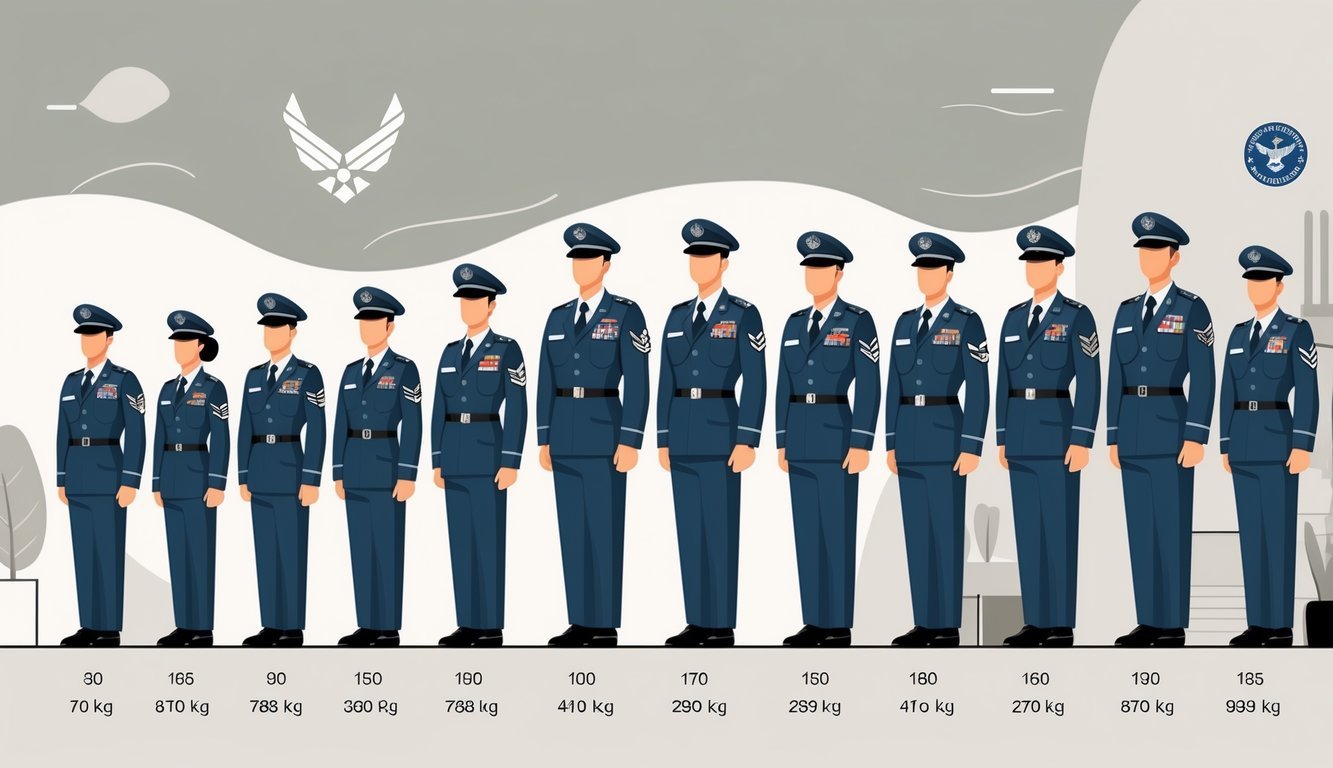
So, you’re thinking about joining the Air Force and wondering if your height and weight fit the bill? The Air Force sets height limits between 4’10” and 6’8″. Weight limits depend on your height and age, and the rules are pretty strict to keep everyone fit for duty. Meeting these standards means you’re ready for the physical demands of military training and staying prepared for missions.
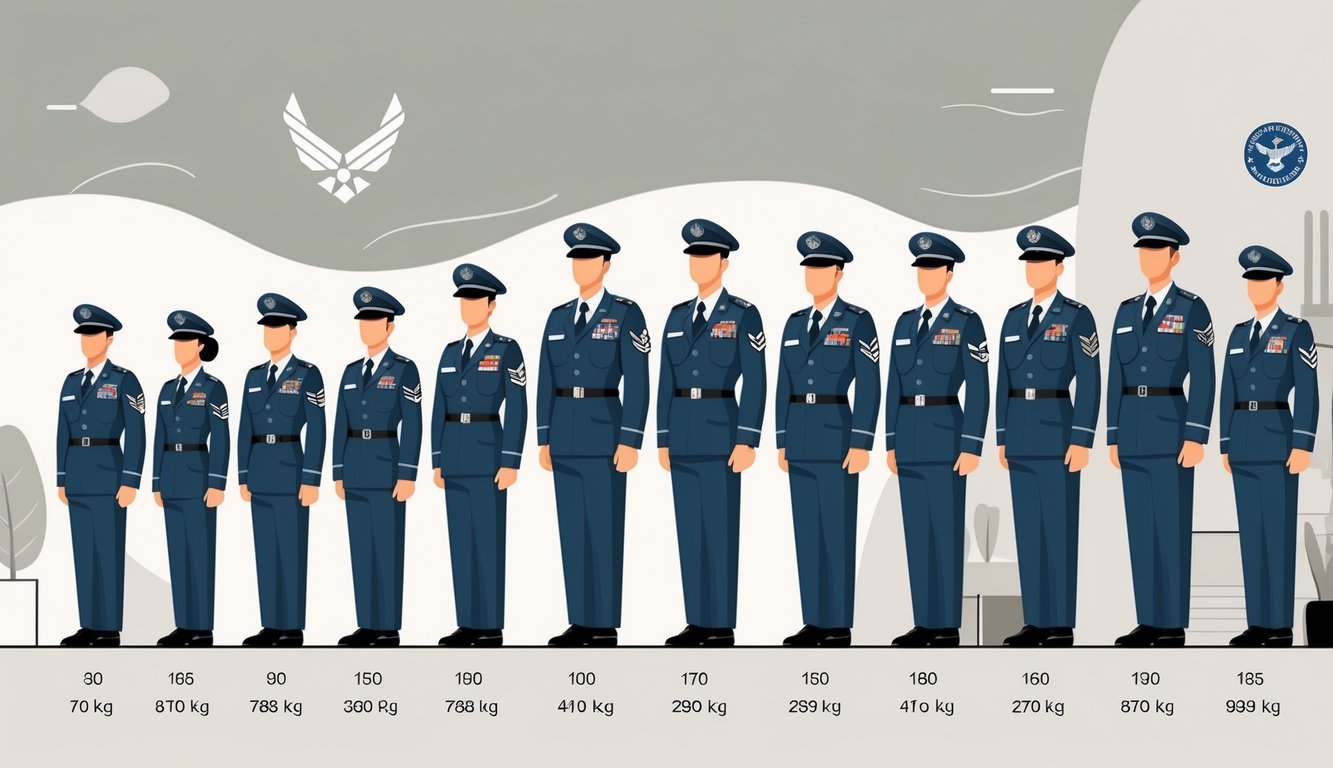
Your weight has to fall within a certain range for your height, making sure you’re healthy enough to serve. These rules aren’t just about looking good on paper—they help you perform better during training and throughout your Air Force career.
If you know what’s required, you can plan ahead. Maybe you’re checking if you meet the standards, or maybe you’re setting a goal to get there. Either way, these guidelines are your first checkpoint for a strong start in the Air Force.
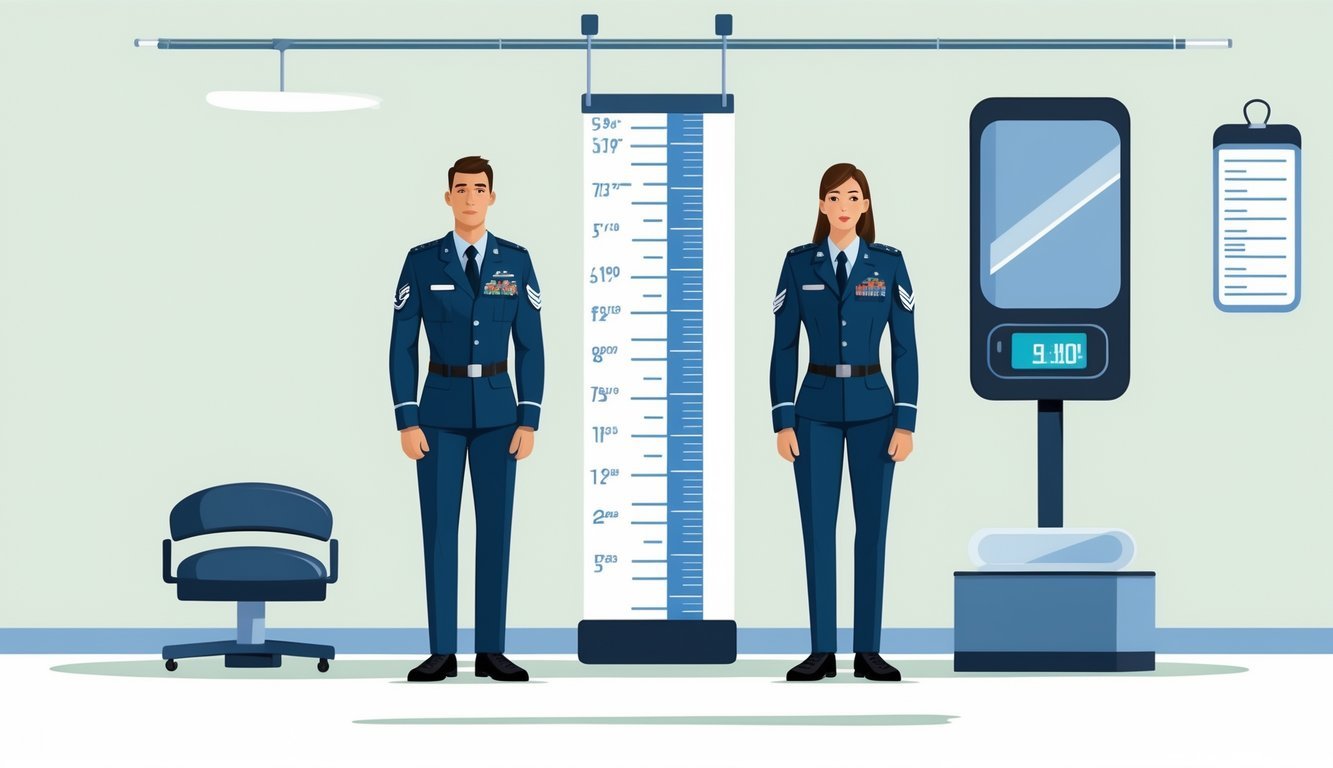
The Department of the Air Force sets height and weight limits to make sure you’re fit for duty. The focus is on healthy body composition and staying ready.
You need to be between 4’10” and 6’8″ tall to join the U.S. Air Force. Weight standards change depending on your height and sex, and the goal is to keep excess fat—especially around the abdomen—in check.
Body fat limits break down like this:
If you weigh more than the limit for your height, you’ll get a body composition assessment to check your body fat percentage. They look at your waist-to-height ratio and abdominal size to catch unhealthy fat.
Recruiters and Medical Entrance Processing Stations (MEPS) check your height and weight when you start the process. If you’re over the weight limit, you’ll take a Body Composition Assessment (BCA) at a medical facility or during regular health checks.
They measure your waist, height, and sometimes your neck and hips to figure out your body fat. This helps spot too much fat in the belly area, which brings higher health risks.
You can track your progress on platforms like MyFSS or MyBodyComp. They check you regularly to make sure you’re still meeting standards while you serve.
If you don’t hit the weight or body fat targets, you might still have a shot with a waiver. You’d apply through your recruiter or chain of command.
They look at waivers case by case. Usually, you’ll need to join a Body Composition Improvement Program (BCIP) to lose extra fat. There are deadlines, and if you don’t improve, you could be separated.
Some medical conditions or unique body types might qualify for exceptions under Department of Defense Instruction 1308.03. It’s always best to talk with your medical provider or recruiter about your options.
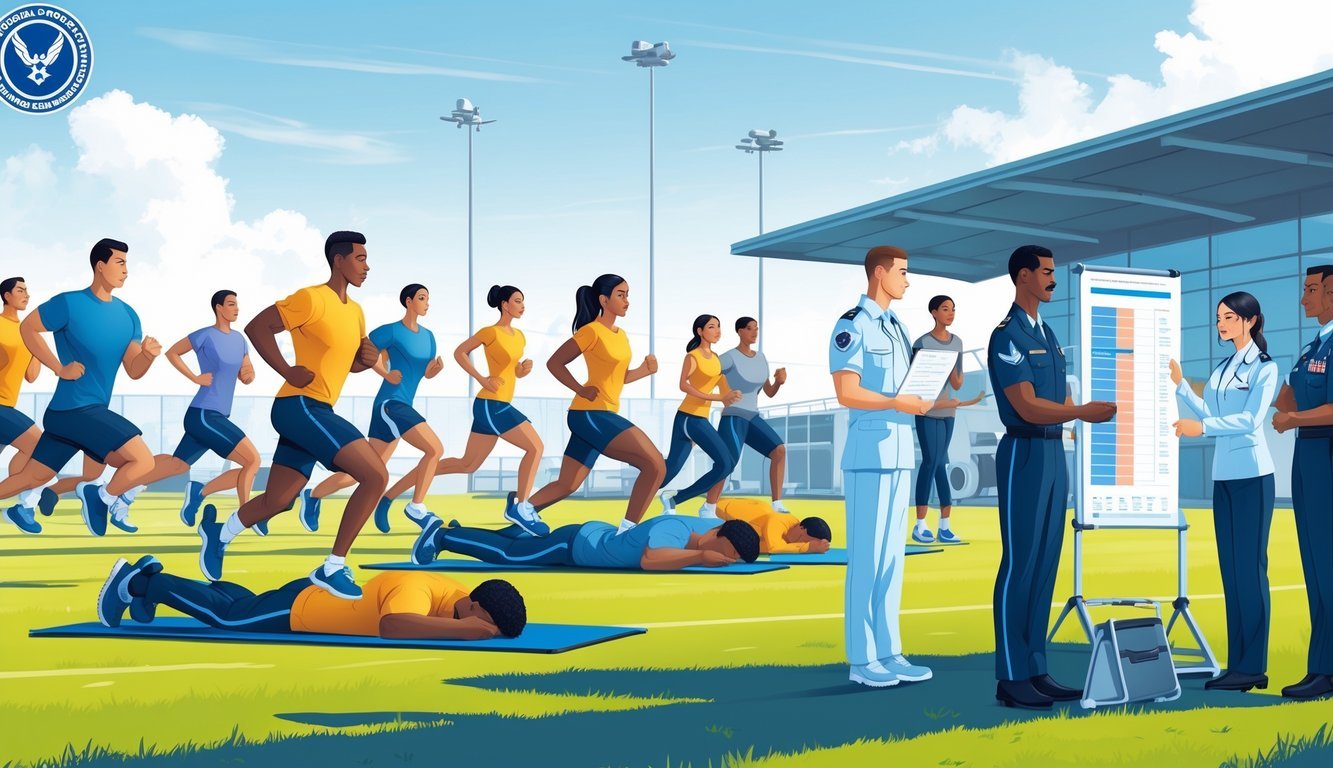
Your physical readiness doesn’t just affect your health—it shapes how well you do in the Air Force or Space Force. Meeting fitness and medical standards keeps you eligible for officer and enlisted roles, whether you’re active duty or one of the Guardians.
You’ll take the Physical Fitness Test (PFT) twice a year, usually in the fall and spring. The test checks your ability to run, do push-ups, and complete sit-ups.
These activities show your overall strength and endurance. The Air Force wants you to train smart—take breaks, recover, and avoid injuries.
If your scores drop, you might get a plan tailored just for you. Guardian resilience teams and human performance experts are there to help you improve.
Basic Military Training builds your physical skills, focusing on safe, steady movement to lower your risk of injuries.
Your height and weight need to fit within Air Force limits to cut down on health risks. These include body fat and weight rules based on your age and height.
Staying in these ranges lowers your chance of developing hypertension, stroke, diabetes, and heart disease. The Air Force supports holistic health—they want you to balance nutrition, exercise, and rest.
If you need treatment for health issues, like insulin, you have to manage it responsibly.
They focus on health to keep everyone ready and able to do their jobs.
Your vision needs to meet certain standards. You must have clear visual acuity, with or without glasses or contacts.
Mild astigmatism is usually okay, but serious vision problems can keep you out. Hearing gets tested too, making sure you can pick up sounds in all kinds of environments.
Standing height still has to be between 4’10” and 6’8″. They check your physical traits to make sure you can safely use Air Force gear and equipment.
You can join as enlisted or go for an officer path. Officers usually need a college degree or must attend Officer Training School.
Space Force Guardians follow similar requirements but focus more on space operations. Folks like Katharine Kelley in human capital roles help guide careers in this growing field.
Whether you want to fly or support from the ground, your fitness, health, and education shape your journey. Physical and medical standards keep you ready for missions and open doors for advancement.
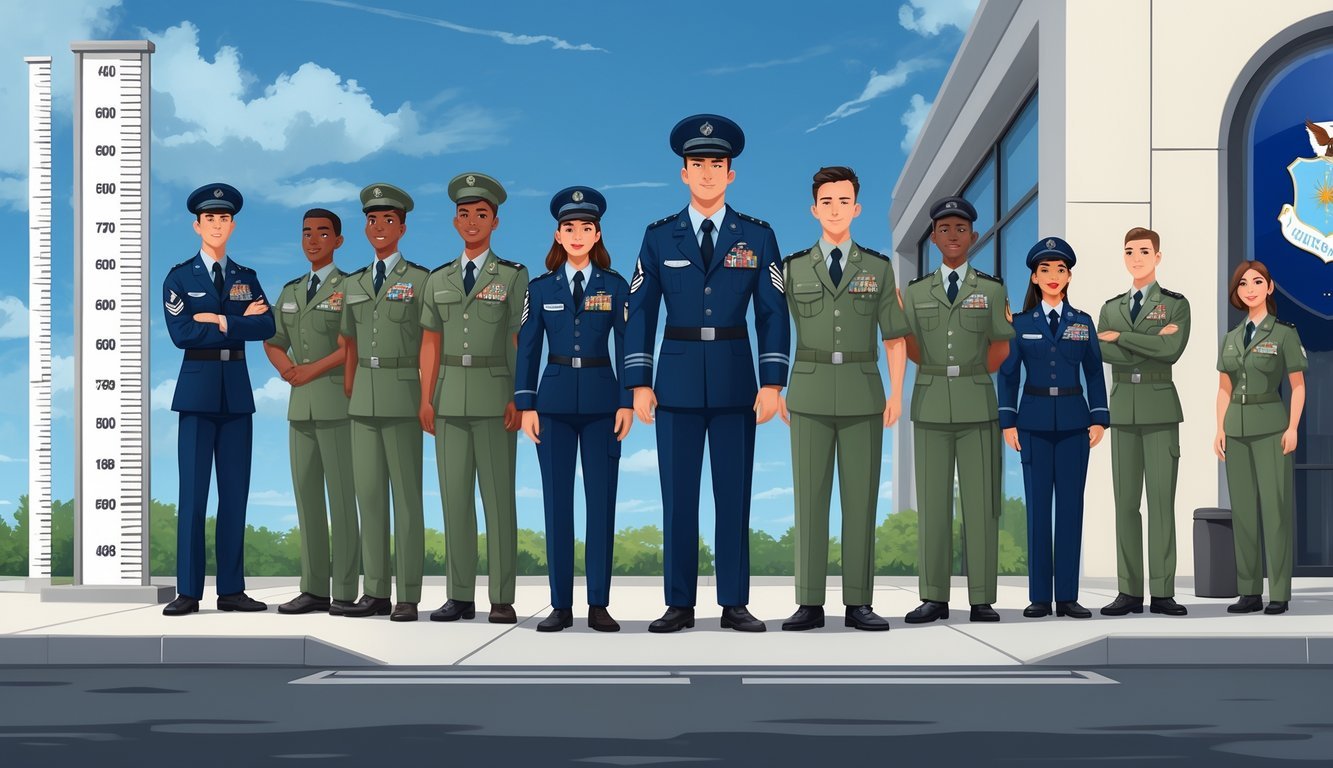
You need to meet specific height and weight limits based on your age, gender, and body type. The Air Force uses body fat percentage and other measurements to decide if you qualify.
Females need to be at least 4 feet 10 inches tall but not taller than 6 feet 8 inches. Weight limits change based on your height and age, with a max body fat of about 28% if you’re under 30, and up to 32% if you’re over 30.
Check your height, then look up your allowed weight range on the Air Force charts for your age and gender. They also measure your neck and waist to figure out your body fat.
Weight limits depend on your height and age. Males under 30 can have up to 20% body fat, and those over 30 can have up to 24%. The exact weight number comes down to your height.
Height waivers rarely happen. If you’re shorter than 4’10” or taller than 6’8″, you probably won’t get a waiver. The standards are strict for safety and performance reasons.
You can find the latest weight charts on official Air Force websites or by asking at Air Force recruiting offices. The charts break down standards by age and gender.
Air Force pilots stick to the same height and weight rules as others. Still, they might need to meet extra health and fitness standards to handle flying.
Pilots always have to stay within the basic limits for height and body fat.